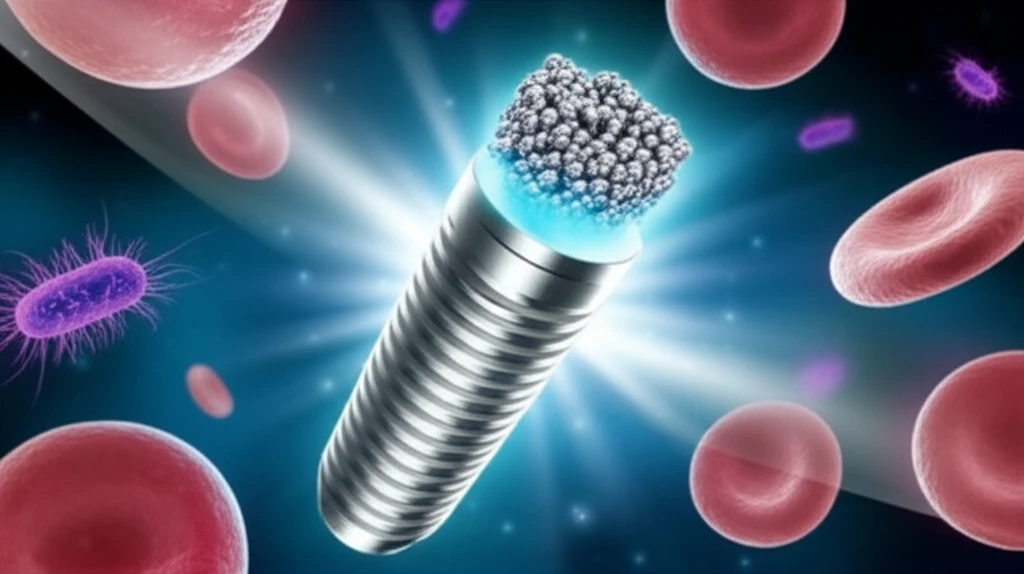
Magnesium Makeover: Can a Zinc and Strontium Coating Make Implants Safer?
"New research explores how modifying magnesium alloys with zinc and strontium could enhance implant safety by fighting corrosion, boosting bone growth, and battling bacteria."
When bones break or suffer defects, surgeons often turn to implants to provide support during the healing process. While materials like stainless steel and titanium alloys have been the go-to choices, they lack a crucial property: the ability to encourage new bone to grow. Furthermore, these materials can lead to bacterial infections and often require a second surgery to remove them once the bone has healed.
Enter magnesium alloys. These materials degrade naturally within the body, offer mechanical strength similar to bone, and release magnesium ions that are essential for tissue growth. However, magnesium alloys degrade too quickly, potentially leading to complications. Scientists are now exploring ways to slow down this degradation and enhance the beneficial properties of magnesium alloys.
A recent study published in ACS Biomaterials Science & Engineering investigates how adding zinc (Zn) and strontium (Sr) to the surface of a magnesium alloy can improve its performance. The study explores the potential of this modification to enhance corrosion resistance, promote bone growth (osteoinduction), and provide antibacterial properties, creating a safer and more effective implant material.
The Zn/Sr Coating: A Triple-Threat Solution for Magnesium Implants

Researchers at several Chinese universities have developed a method to modify the surface of ZK60 magnesium alloy using a one-step hydrothermal process. This process involves creating a coating containing both zinc and strontium ions. The goal is to create a surface that:
- Enhances Corrosion Resistance: The coating acts as a protective barrier, slowing down the rapid degradation of the magnesium alloy in the body's fluids.
- Promotes Bone Growth (Osteoinduction): Zinc and strontium ions are known to encourage bone cell growth and differentiation, helping the implant integrate better with the surrounding bone.
- Combats Bacteria: Zinc ions possess antibacterial properties, helping to prevent infections that can hinder the healing process.
A Promising Step Toward Safer Implants
The study's findings suggest that the Zn/Sr surface modification of magnesium alloys holds significant promise for improving the safety and effectiveness of medical implants. By slowing down degradation, promoting bone growth, and fighting bacterial infections, this approach could lead to:
<ul><li>Reduced risk of complications.</li><li>Faster healing times.</li><li>Improved implant integration.</li><li>Elimination of the need for secondary surgeries.</li></ul>
While further research is needed to optimize the coating process and assess its long-term effects in the body, this study provides a valuable foundation for developing a new generation of biodegradable implants that can better support bone healing and improve patient outcomes.
